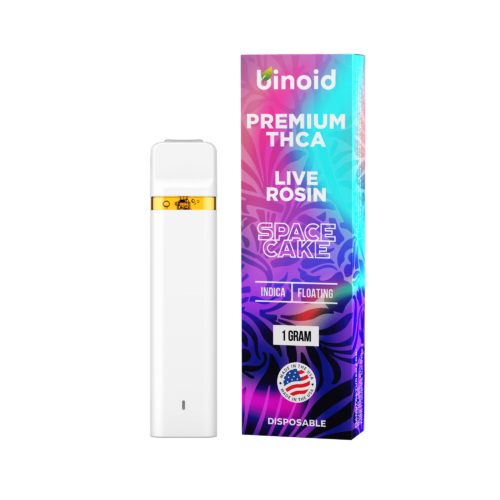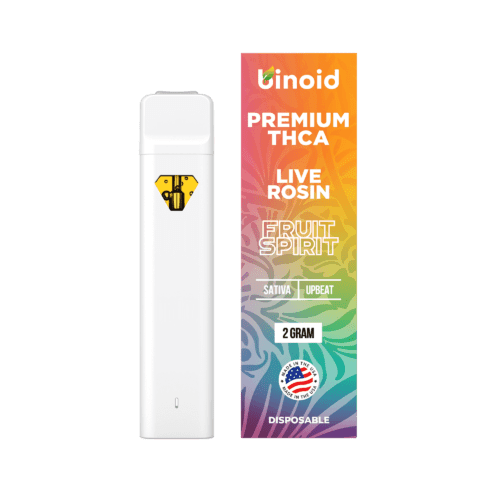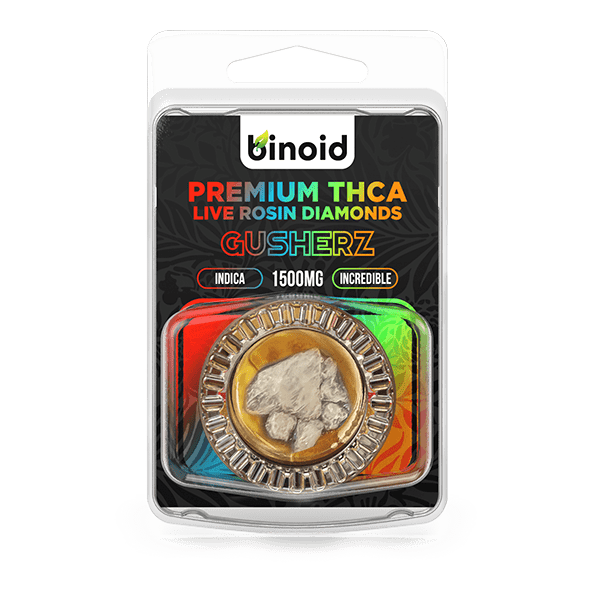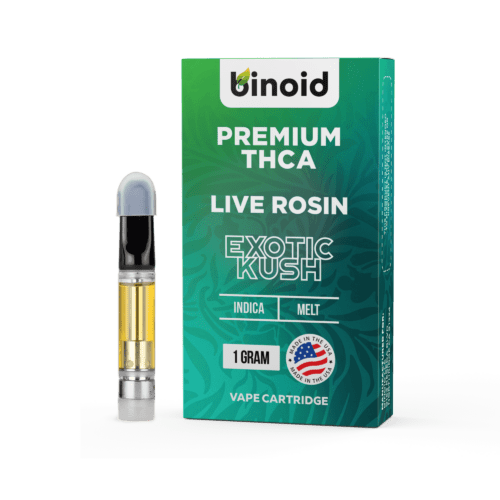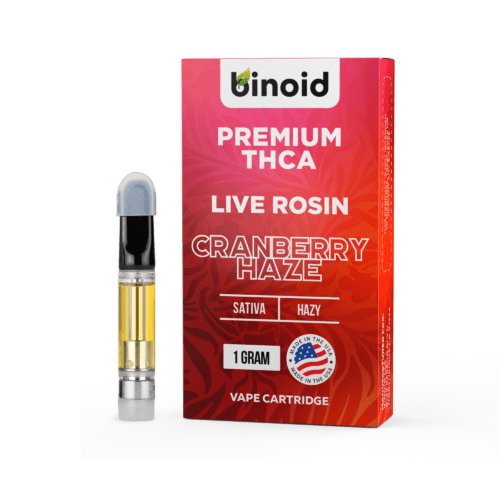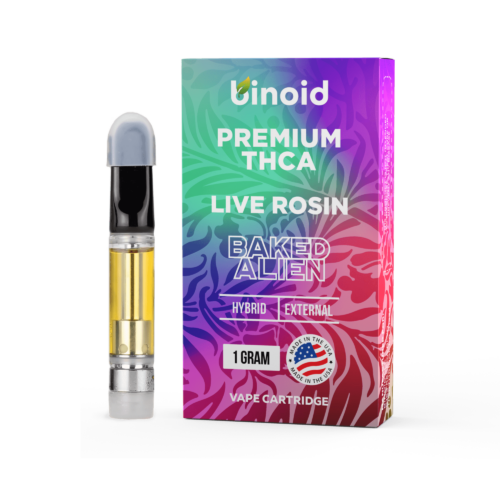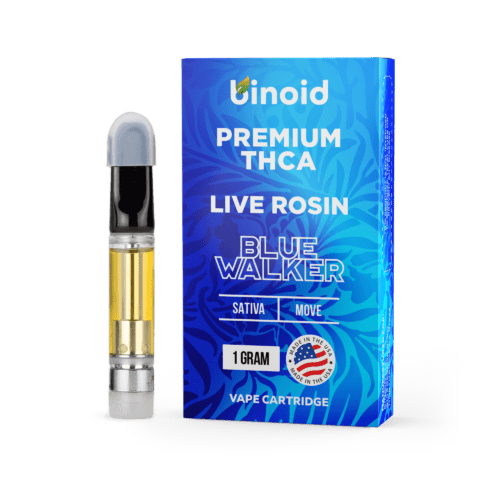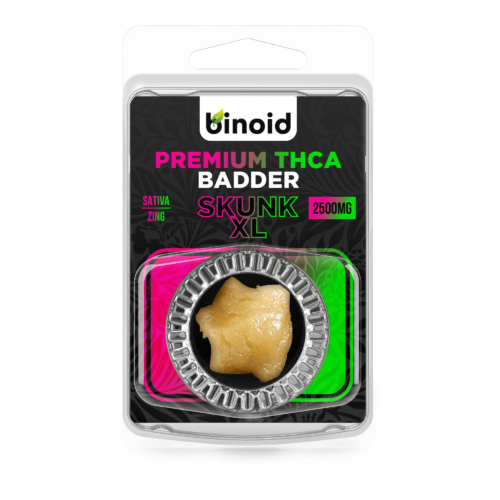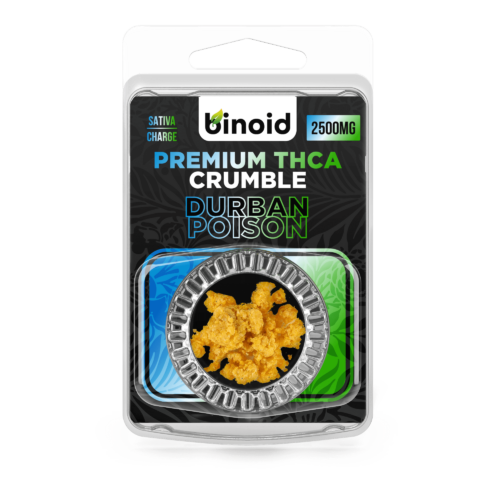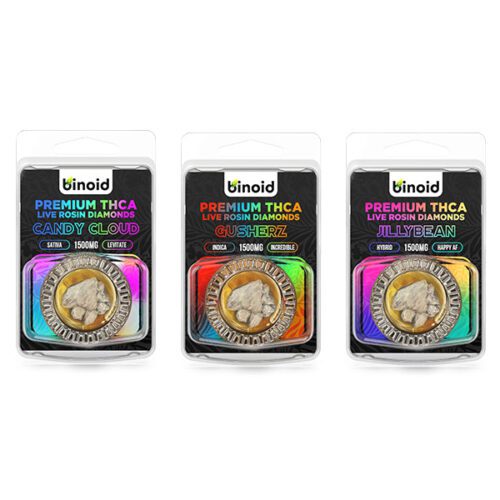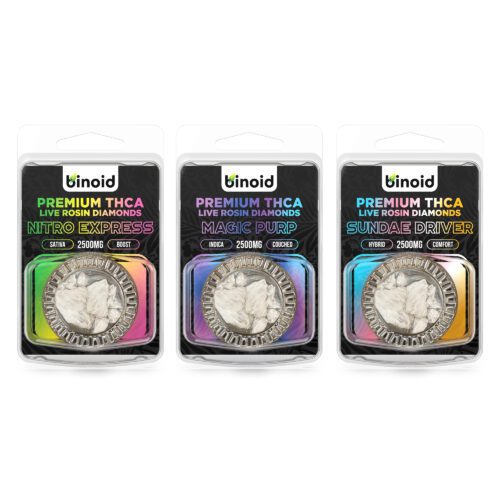Step into the realm of cannabis connoisseurship, and you’ll undoubtedly hear whispers and accolades for a particular type of concentrate: live rosin. It’s a name that resonates with purity, potency, and an authentic expression of the plant. But beyond the buzz, what truly defines this elite extract? What does live rosin actually look like, and how does it translate into a tangible feeling, both physically and mentally? We’re about to peel back the layers on this solventless marvel, exploring its visual characteristics, its unique textures, and the nuanced sensations it’s celebrated for. Prepare to uncover the essence of live rosin, from its fascinating origins to the multifaceted ways it can captivate your senses and elevate your appreciation for cannabis craftsmanship.
TO BUY LIVE ROSIN CLICK HERE
Recommended products
What is Live Rosin and What Does It Look Like?
Live rosin stands as a pinnacle of solventless cannabis concentrates, revered for its exceptional quality, which arises from a meticulous production process that entirely avoids the use of chemical solvents. Its creation begins with premium cannabis that is flash-frozen immediately upon harvest, just like with live resin, to preserve the full spectrum of cannabinoids and, crucially, the highly volatile terpenes. However, the journey from fresh-frozen material to final product diverges significantly.
Live rosin is the end result of mechanically pressing ice water hash (also known as bubble hash) derived from this fresh-frozen plant material. This ice water hash itself is a collection of trichome heads, the tiny, resinous glands on the cannabis plant that house the majority of its cannabinoids and terpenes. By first isolating these trichomes in a pure, solvent-free manner and then applying carefully controlled heat and pressure, live rosin captures an incredibly rich and unaltered profile of the living plant.
The appearance of live rosin is a testament to its purity and the skill involved in its creation, often presenting a visually stunning and highly desirable product. It typically boasts a beautiful, creamy, or batter-like consistency, sometimes referred to as “budder” or “badder”, which’s opaque and light in color. You’ll often see shades ranging from a pale, off-white or light cream to a rich, buttery yellow or a gentle amber hue.
Unlike some solvent-based extracts that can be more translucent or glass-like, live rosin tends to have a more opaque and often glistening appearance. The texture can vary slightly based on the starting material, the specific techniques used during the ice water extraction, and the pressing parameters, sometimes being slightly more crumbly or waxy. Its surface might look smooth and glossy or perhaps a bit more matte, but it invariably conveys a sense of richness and quality, free from any visual indicators of residual plant matter or impurities.
When It Was Discovered
Live rosin doesn’t have a singular “eureka!” moment of invention tied to a specific date or individual in the way some products do; rather, its emergence is a story of gradual evolution and refinement within the solventless extraction community. It represents the convergence of advancing techniques in hash making and rosin pressing, driven by a collective desire for purer, more flavorful concentrates. The foundational principle of rosin extraction was first introduced to the wider online cannabis community around 2006 by a forum member known as Compashon. This basic yet ingenious solventless idea gained significant traction and further refinement, notably highlighted in 2015 by Weedmaps contributor Phil “Soilgrown” Salazar, who helped popularize the technique of pressing cannabis flower into rosin.
The “live” aspect of live rosin came into play as cannabis connoisseurs and extractors increasingly recognized the benefits of using fresh-frozen plant material to preserve the delicate terpene profiles that are often diminished during traditional drying and curing processes. As the appreciation for terpene-rich experiences grew throughout the 2010s and into the 2020s, so did the experimentation with fresh-frozen inputs for solventless methods.
The development of more sophisticated rosin presses, offering precise temperature and pressure control, alongside advancements in ice water extraction (bubble hash) techniques, paved the way for live rosin. Artisans began to create high-quality ice water hash from fresh-frozen cannabis and then press that hash to create a product that was exceptionally potent, flavorful, and entirely solvent-free. Thus, live rosin as a distinct and highly sought-after product category emerged from this ongoing innovation, representing a peak in solventless extraction artistry rather than a sudden invention with a pinpointable date.
Recommended products
How It’s Exactly Created
The creation of live rosin is a multi-step, labor-intensive art form that relies on skill, patience, and high-quality starting material, all without the use of any chemical solvents. It’s a true expression of the cannabis plant’s resin in its purest form. The process begins with freshly harvested cannabis that is immediately flash-frozen to preserve its delicate terpene and cannabinoid profile. From there, the journey to live rosin typically involves transforming this frozen material into ice water hash, which is then pressed.
Here’s a more detailed breakdown of the intricate steps involved:
Starting Material: The process begins with premium-grade cannabis flower and trim that has been flash-frozen immediately after harvest. This “fresh frozen whole plant” (FFWP) material is key to the “live” aspect, as it retains a higher concentration of volatile terpenes compared to dried and cured material.
Ice Water Extraction (Making Bubble Hash): This is how that’s done:
Washing: The fresh-frozen cannabis is gently agitated in ice-cold water. This agitation, often done with specialized washing machines or by hand with paddles, causes the brittle, frozen trichome heads (which contain the vast majority of cannabinoids and terpenes) to break off from the plant material.
Sieving/Filtration: The water, now laden with trichomes, is passed through a series of micron-graded filter bags (often called “bubble bags”). Each bag has a different screen size, allowing for the separation of trichomes by size and the removal of plant debris and ice. The finest micron bags capture the highest quality trichome heads.
Collection: The collected material from the desired micron bags is a wet, paste-like substance. This is the ice water hash, or bubble hash. The quality can range (e.g., “full melt” refers to the highest grade that melts completely when heated, leaving no residue).
Drying: This is a critical step. The collected ice water hash must be thoroughly dried to prevent microbial growth and to ensure a quality end product. This is often done by air-drying in a cool, dark place, or more advanced methods like freeze-drying are used, which is preferred for preserving terpenes and achieving the best consistency for pressing into live rosin.
Rosin Pressing: The process is done simply by doing the following:
Preparation of Hash: Once the ice water hash is perfectly dried, it’s typically loaded into fine mesh rosin bags (different micron sizes are used here as well, depending on the hash quality and desired output). This helps to keep any microscopic particulate matter out of the final rosin.
Applying Heat and Pressure: The filled rosin bag is then placed between two heated plates on a rosin press. Precise temperature and pressure settings are crucial. The heat is kept relatively low (compared to flower rosin pressing) to preserve the delicate terpenes, while sufficient pressure is applied to squeeze the molten resin out of the hash and through the mesh bag.
Collection: The golden, resinous oil that flows out is the live rosin. It is carefully collected from parchment paper placed below the plates. The consistency and color can vary based on the starting material, the quality of the ice water hash, and the pressing parameters (temperature, pressure, duration).
Curing (Optional Post-Processing): Sometimes, fresh press live rosin undergoes a curing process. This might involve leaving it at room temperature or applying gentle heat (a “jar tech” or “heat cure”) for a period, which can alter its consistency (e.g., from a shattery or sappy fresh press to a more stable, opaque “budder” or “badder”) and can sometimes enhance or change the terpene expression. Cold curing is another popular method to achieve specific textures.
The entire process is meticulous and demands a high level of skill to produce top-tier live rosin that is both potent and incredibly flavorful, truly representing the essence of the live cannabis plant.
Recommended products
What Does Live Rosin Feel Like – Physically and Mentally?
Engaging with live rosin is often described as a premium sensory experience, one that appeals to a refined palate and a desire for a clean, full-spectrum effect. Because it is a solventless concentrate derived from fresh-frozen material, the “feel” of live rosin is frequently characterized by its purity, its robust flavor profile, and the encompassing nature of its effects. The journey begins well before consumption, with its visual appeal and aromatic promise setting the stage for a sophisticated encounter. The lack of any residual solvents contributes to a sensation of cleanness, both in taste and in the overall experience it imparts on the body and mind.
What Live Rosin Feels Like Physically
Physically, live rosin offers a distinct tactile and sensory experience from the moment you handle it. Depending on its specific consistency – which can range from a creamy badder or budder to a more crystalline “jam” or even a stable, taffy-like fresh press – it will feel different on a dab tool. Badders are soft and easy to manipulate, while fresh press might be stickier. When consumed, typically via dabbing or vaping, the most immediate physical sensation is the incredibly rich and nuanced flavor that envelops the palate.
Thanks to the preservation of volatile terpenes through the solventless fresh-frozen process, these flavors are exceptionally bright and true to the strain, ranging from intense fruitiness and sweet floral notes to deep earthy, piney, or gassy complexities. Users often report an exceptionally smooth vapor, especially with high-quality live rosin, though the concentration of terpenes can still be very potent. Following consumption, the physical sensations can vary widely depending on the strain, often described as a clean, encompassing warmth or a wave of profound relaxation that spreads through the body, sometimes leading to a chilled-out, comfortable state.
Recommended products
What Live Rosin Feels Like Mentally
Mentally, the experience with live rosin is often lauded for its clarity and well-roundedness, reflecting the complete cannabinoid and terpene profile extracted without the use of solvents. Users frequently report a swift onset of effects that can elevate mood and induce a state of euphoria or deep contentment. The mental journey is often described as being exceptionally clean and articulate, allowing for a heightened appreciation of surroundings, a surge of creative thought, or a profound sense of calm, depending on the strain’s specific profile.
Many find that live rosin provides a very “full” experience, where the various components of the plant work in harmony, leading to effects that feel more complete and satisfying than those from isolates or some solvent-based extracts. It can foster a blissful state of mind, allowing for peaceful introspection or simply a relaxed and happy disposition, making it a favorite for those seeking a premium and unadulterated cannabis experience.
Can Live Rosin Get You High?
Absolutely, live rosin can get you high, and it is renowned for doing so with remarkable potency and a full-bodied character. The reason live rosin is so effective at producing a high lies in its concentrated levels of psychoactive cannabinoids, primarily THCA (Tetrahydrocannabinolic acid). This THCA is the natural, non-intoxicating acidic precursor to THC, which is abundant in the fresh-frozen cannabis trichomes used to make live rosin. When live rosin is heated during consumption – for instance, when dabbed or vaped – the THCA undergoes decarboxylation, converting into the psychoactive Delta-9 THC.
Because live rosin is essentially a collection of these concentrated trichome heads, meticulously separated and pressed, it contains a much higher percentage of THCA than cannabis flower. Potency levels for live rosin can be substantial, often ranging from 60% to over 85% total cannabinoids. This high concentration ensures that even a small quantity can deliver a powerful psychoactive experience, leading to the distinct euphoric and perception-altering effects associated with a cannabis high. The rich terpene profile, faithfully preserved in the solventless process, also contributes significantly to modulating and enhancing this high through the entourage effect.
Recommended products
What Can Influence Your Live Rosin High?
The journey you embark on with live rosin is not a predetermined path; rather, it’s a dynamic experience shaped by a confluence of interacting elements. Numerous factors can influence the intensity, character, and overall narrative of your live rosin high. Acknowledging these variables can empower you to better curate your sessions and approach this premium concentrate with enhanced understanding.
#1: Your Body Type and Tolerance to Live Rosin
Your individual physiology and accumulated tolerance to cannabis are paramount in shaping your live rosin experience. Factors such as your body weight, metabolic rate, and even your unique endocannabinoid system (the network of receptors that interact with cannabinoids) all play a significant role in how you process and respond to live rosin. A faster metabolism might lead to a quicker onset and shorter duration of effects, while a slower metabolism could mean the opposite.
Tolerance, which develops with consistent cannabis use, particularly of high-potency products, is also a major determinant. If you are a seasoned consumer with a high tolerance, you will likely need a larger dose of live rosin to achieve your desired state compared to someone who is new to cannabis or consumes it infrequently. For the latter, even a very small amount of potent live rosin can produce profound effects. Understanding your body’s tendencies and your current tolerance level is key to a predictable and enjoyable experience.
#2: How Much Live Rosin You Take
The quantity of live rosin you consume – your dosage – is arguably the most direct influencer of your high. Given that live rosin is a highly concentrated product, packed with cannabinoids and terpenes, the adage “less is more” often applies, especially for those less familiar with its potency. A very small dose, perhaps the size of a tiny bead, might induce a gentle shift in mood, a subtle wave of relaxation, or a light spark of creativity.
As the dose increases, so does the intensity of the psychoactive effects, which can range from pronounced euphoria and heightened sensory input to deep, immersive relaxation. It is always recommended, particularly when trying a new batch or if you have lower tolerance, to start with the smallest effective dose and wait to fully gauge the effects (which can be almost immediate with inhalation methods) before considering an additional amount. This careful approach helps prevent overconsumption and ensures the experience remains within a comfortable and blissful realm.
Recommended products
#3: The Combination of Cannabinoids
The specific blend of cannabinoids present in your live rosin plays a crucial role in defining the nuances of your ‘high’. While THCA (which converts to Delta-9 THC) is the star player in terms of psychoactive intensity, the presence and ratios of other cannabinoids contribute significantly to the overall therapeutic and experiential tapestry, a phenomenon often referred to as the “entourage effect.” This complex interplay means that two live rosins with similar THC percentages can still offer noticeably different experiences due to their unique cannabinoid cocktails. The solventless nature of live rosin production excels at preserving this natural spectrum.
Here’s a closer look at some key cannabinoids you might find and their general contributions:
CBD (Cannabidiol): Though often found in lower concentrations in THC-dominant live rosin, CBD is non-intoxicating. It’s well-regarded for its potential to temper some of THC’s more intense psychoactive effects, potentially contributing to a more balanced and smooth experience, often associated with a sense of calm.
CBN (Cannabinol): Typically formed as THC ages and degrades, CBN is usually present in very small amounts in properly made live rosin from fresh material. It is mildly psychoactive and is often linked anecdotally to more tranquil or sedative-like sensations, potentially enhancing relaxation.
CBG (Cannabigerol): Known as a “mother cannabinoid” because it serves as a precursor to other major cannabinoids like THC and CBD, CBG is non-intoxicating in its own right. Its presence can contribute to the overall synergy of effects, and it’s being explored for various unique properties that might promote a sense of well-being.
CBC (Cannabichromene): This is another non-intoxicating cannabinoid that is believed to work in concert with THC and CBD. CBC is thought to potentially support mood and contribute to an overall feeling of contentment and positivity when part of the cannabinoid spectrum.
THCA (Tetrahydrocannabinolic Acid): This is the most abundant cannabinoid in raw and live cannabis, including live rosin. THCA is non-psychoactive in its acidic state but converts into the highly psychoactive Delta-9 THC upon decarboxylation (heating), which is what delivers the primary euphoric effects of live rosin.
Delta 8 THC (Delta-8-Tetrahydrocannabinol):Naturally occurring in very trace amounts in cannabis, Delta 8 THC is an analog of Delta 9 THC and is psychoactive, though generally considered less potent. If present in more than trace amounts in live rosin, it would likely be due to specific hemp cultivars or conversion, offering a potentially milder, clearer high for some.
Delta 9 THC (Delta-9-Tetrahydrocannabinol): This is the primary psychoactive compound responsible for the classic cannabis “high.” In live rosin, it’s primarily formed from the decarboxylation of THCA during consumption, providing the potent euphoric and mind-altering sensations.
THCV (Tetrahydrocannabivarin): This cannabinoid’s effects can be dose-dependent. In smaller doses, it may be non-psychoactive and even suppress appetite, while in higher doses, THCV can be psychoactive, often reported to provide a more stimulating, focused, and shorter-duration high compared to Delta 9 THC.
THC-P (Tetrahydrocannabiphorol): A homolog of THC with a longer alkyl side chain, THC-P is understood to bind with much greater affinity to CB1 receptors. This suggests it is significantly more potent than Delta 9 THC. If naturally present in the strain used for live rosin, even in very small concentrations, it could dramatically amplify the intensity and duration of the ‘high’.
HHC (Hexahydrocannabinol): A hydrogenated form of THC, which can occur in trace amounts naturally but is often created through semi-synthetic processes. It is psychoactive, with users often describing its effects as similar to THC, perhaps with a tendency towards relaxation and a noted stability and longer shelf-life. Its natural presence in live rosin would be minimal.
PHC (Hydrox4phc): Represents a more recent entrant into the diverse family of hemp-derived cannabinoids. Unlike naturally abundant cannabinoids like CBD or Delta-9 THC, PHC is typically understood to be a specialized, semi-synthetic compound. Its name, Hydrox4phc, suggests a molecular structure involving a phytocannabinoid (“phc”) that has undergone specific chemical modifications, likely involving hydroxyl groups (“Hydrox4”), to alter its properties and how it interacts with the human body. The primary intention behind creating such compounds is often to influence their metabolic pathway, potentially enhancing potency, duration, or the overall character of the effects experienced by the user.
The natural, solventless process of creating live rosin aims to capture as many of these naturally occurring compounds as possible in their original ratios, leading to a truly full-spectrum experience.
Recommended products
#4: The Delivery Method of Products Using Live Rosin
The manner in which you choose to introduce live rosin into your system profoundly shapes the ensuing experience, dictating the speed of onset, overall intensity, and the duration of its effects. Different consumption methods boast varied absorption pathways and bioavailability, such as the following:
Vapes: Live rosin can be formulated into vape cartridges or pods, providing a convenient and discreet way to inhale its vapor. The effects are typically rapid, often noticeable within just a few minutes, as cannabinoids are efficiently absorbed into the bloodstream via the lungs. This method allows for controlled dosing and delivers the full, rich terpene profile.
Dabs: Dabbing remains one of the most popular methods for consuming live rosin, involving the vaporization of a small amount on a heated surface (like a quartz banger or e-nail) and inhaling the resultant vapor through a dab rig. This technique offers an almost immediate onset of potent effects and is prized for its ability to showcase the nuanced flavors and aromas of the live rosin.
Gummies: Live rosin’s full-spectrum goodness can be infused into gummies, offering a smoke-free, precisely dosed edible option. When ingested, cannabinoids undergo metabolization in the liver, where THC is converted to the more potent 11-hydroxy-THC. This results in a delayed onset (typically 30 minutes to 2 hours) but a more intense and significantly longer-lasting bodily and cerebral experience.
Baked Goods: Similar to gummies, incorporating live rosin into baked items like cookies, brownies, or chocolates provides another avenue for edible consumption. The effects profile, including the delayed onset and extended duration due to digestive processing and liver metabolism, mirrors that of other live rosin edibles, offering a profound and enduring sensation.
Tinctures: Live rosin tinctures involve infusing the concentrate into a carrier oil, designed for sublingual (under the tongue) administration or for adding to food and drinks. Sublingual absorption allows some cannabinoids to enter the bloodstream directly, potentially offering a quicker onset than full ingestion (15-45 minutes), with the remainder being processed like an edible for longer-lasting effects.
Capsules/Softgels: For those seeking ultimate discretion and precise, pre-measured doses, live rosin can be encapsulated. Taken orally, these function like other edibles, with effects having a delayed onset as the capsule is digested and the cannabinoids are metabolized by the liver, leading to a potent and prolonged experience without any taste or aroma.
Recommended products
#5: That Said Product’s Strain
The specific cannabis strain from which the live rosin was crafted plays a pivotal role in tailoring your overall experience. “Strain” essentially refers to the unique chemovar, characterized by its distinct terpene profile and the inherent ratios of cannabinoids found in that particular hemp or cannabis breed. Each terpene contributes not only its signature aroma and flavor—ranging from zesty citrus to deep pine, sweet berries to pungent skunk—but also interacts synergistically with cannabinoids to produce nuanced effects. There are three primary classifications for strains, and an extensive array of individual strains falls within these broader categories, each offering a unique journey:
Indica: Widely recognized for their tendency to impart a deeply calming and mellowing sensation, often felt throughout the body as well as influencing one’s mood towards tranquility. These strains are frequently selected for evening use or during times when profound relaxation and a serene state are desired. You can find full Indica strains, which embody classic Indica characteristics; Indica-leaning hybrids, which feature predominantly Indica traits with subtle Sativa influences; and Indica-dominant strains, where the primary experience is unmistakably that of an Indica.
Sativa: Are often the go-to choice for daytime use, as they are commonly associated with effects that may be energizing, uplifting, and conducive to cerebral activity. Individuals might opt for Sativa varieties when seeking to enhance creativity, maintain focus, or foster a more euphoric and sociable mood. Like Indicas, Sativas are available as full Sativa cultivars, Sativa-leaning hybrids that carry a Sativa majority with some Indica undertones, and Sativa-dominant strains, where the bright and invigorating Sativa qualities take center stage.
Hybrid: The result of meticulous crossbreeding between Indica and Sativa plants, ingeniously cultivated to offer a balanced spectrum of effects or to highlight specific desirable traits from both parent lineages. These strains can provide a remarkably versatile experience, sometimes initiating with the cerebral clarity of a Sativa before smoothly transitioning into the comforting body relaxation typical of an Indica, or vice-versa. While many hybrids aim for an equilibrium close to a 50/50 Indica/Sativa ratio, they can also be bred with varying ratios, such as 55/45, depending on the genetic lineage and the specific experiential profile the cultivator aims to achieve.
#6: Your Overall State of Mind
The mental and emotional landscape you inhabit at the time of consuming live rosin can significantly influence the character and quality of your experience. If you begin your session in a state of calm, positivity, and within a secure, comfortable environment, you are much more likely to navigate a pleasant and rewarding journey. The inherent properties of the live rosin may then amplify these positive feelings, potentially leading to heightened sensations of bliss, expanded creativity, or a more profound sense of peacefulness and well-being.
Conversely, if you approach consumption while feeling particularly worried, agitated, or in surroundings that feel stressful or unfamiliar, the psychoactive nature of live rosin could inadvertently intensify these pre-existing unsettled emotions. It is therefore wise to practice mindfulness regarding your emotional state before partaking. Cannabis concentrates like live rosin tend to accentuate your current mental state rather than entirely overriding it, so fostering a positive mindset and ensuring a supportive setting are key contributors to an enriching and euphoric live rosin adventure.
Final Live Rosin Feelings Thoughts
To engage with live rosin is to participate in an authentic dialogue with the cannabis plant, articulated through a purely mechanical and artful extraction. Its visual allure, from creamy badder to glistening jam, is an immediate invitation to a cleaner, more direct experience. The absence of solvents throughout its creation speaks volumes, promising an unadulterated taste and sensation that purists and flavor-chasers highly prize. Every nuance, from the first aromatic whiff of its preserved terpenes to the comprehensive way its effects unfold, underscores a commitment to quality and natural expression. Understanding live rosin isn’t just about recognizing its potency; it’s about appreciating the craft, the purity, and the vibrant, full-spectrum journey it offers, a true testament to the remarkable potential held within the trichome.


